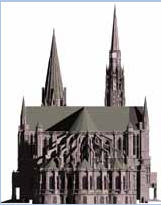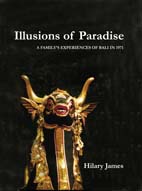 |
The Contractors of Chartres |
|
Author: |
John James, PhD |
|
Publisheer: |
West Grinstead Publications, Wyong |
|
ISBN: |
0959600523 and 4x or 0959600531 |
|
Format: |
Cloth bound, 280mm x 220mm |
|
Price: |
Aud$260.00 (+ P&H)
As this is a heavy book, please contact us for P&H costs (see button above)
|
|
<<< FOR SPECIAL OFFER ON "THE ARK OF GOD" >>>>click here!
For $AUD 1,800 you may buy all 5 volumes directly from the author.
From the Author:
The basic analysis of the cathedral, how it was built, the identification of the masters who did it, and over 30 full-page isometric drawings that show each stage of the construction. This monograph is still, twenty-five years later, the most detailed work on the subject.
Chartres is the most revered and famous cathedral in France, still a holy place, shrine for pilgrims and a religious centre for much of the world. It was rebuilt in one enormous effort after a disastrous fire in 1194. Less than thirty years later, with all its magnificent sculpture and beautiful stained glass, it was completed.
John spent five years there, with his three children, between 1969 and 1974. During that time he researched and measured and photographed every stone in the building. He discovered a number of remarkable things which have excited historians ever since.
The most popular Master Masons of Chartres describes the detective work of discovering the identity of the master architects who created Chartres, and something of the sacred and practical geometry that was used in setting it out.
The Template-makers of the Paris Basin is more scholarly, and more recently he has begun a nine-volume Illustrated Thesaurus of the creative years of Gothic Architecture between 1120 and 1250 in the Paris Basin. This is called The Ark of God.
THE DISCOVERIES:
His most interesting discovery, which brought him invitations to lecture all over the world, was that;
The cathedral of Chartres was not designed by three architects, or even five or six: in our sense of the word there were no architects at all - only building contractors who were led by men deeply trained in all the subtle aspects of their craft. The evidence shows that this cathedral was built by large mobile teams of masons who moved around the countryside from job to job working for as long as the money lasted. When the funds ran out they would leave the site in a body, the crews still intact under their master, to find another project. They were like the circuses of today which roam the country, settling on one site for their allotted time and then, complete with their tents and tools, departing for other places.
Imagine a modern building designed successively by Walter Gropius, Frank Lloyd Wright, Le Corbusier, Alvar Aalto and others. Our first reaction might be to say 'what a mess'. But no: for whenever one of these strongly individual designers has built an addition to an older building he has worked with care and sympathy to preserve what he thought to be the best in the older work. Now imagine how different each building would be if, say, Wright set out the foundations and Gropius built the lower walls compared to the other way round. In the first Wright's intricate sense of geometry would set the pattern for all the rooms and columns, while Gropius' strong sense for rectilinear forms would impose on Wright's setout a simple unadorned silhouette. This simplicity placed over a complex setout would then condition all future work, and might have produced a most interesting building.
Nine contracting teams built the bulk of the cathedral, returning again and again in a disorderly and little supervised annual sequence for over thirty years.








